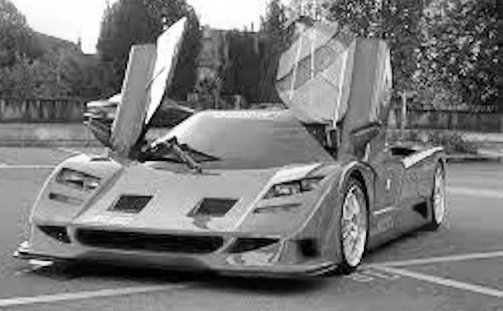Orca Sports Cars Ltd
Breitenbach SO, Canton of Solothurn, Switzerland

Orca Sports Cars Ltd. was a sports car manufacturer from Switzerland.
History
René Beck, who previously headed Orca Engineering in Liechtenstein, founded the company on 9 May 2005 in Breitenbach SO in the canton of Solothurn. This continued the production of sports car while retaining the brand name Orca continued. The company manufactured the Orca 113 platform. They came in three versions, of which a total of seven copies were made. The company was dissolved on May 7, 2010. René Beck had on 6 July 2006 Beck Engineering & composites in Muri bei Bern founded and tried there, the production and marketing as Beck continued.
This platform should be the basis for 198 vehicles in three variants. In the end, however, only seven vehicles were produced in the two companies: three C 113 (coupe), two R 113 (roadster) and two SC 7 (coupe)
The C 113 was a coupe and the first concept vehicle on the Orca 113 platform. The maximum speed is specified at 360 km / h. However, 113 (acceleration 0-100 km / h in under 3 seconds) was the C proved as the fourth fastest car in the world.
- Acceleration 0-100 km / h in less than 3 seconds
- Acceleration 0-200 km / h in 8.5 seconds
- Acceleration 0-300 km / h in 15 seconds
- Top speed: about 360 km / h
R 113
The R 113 was the Roadster version of C 113. Before setting the Orca-113 platform, the R 113 was the fastest road-going vehicle in the world (acceleration 0-100 km / h in less than 2.5 seconds). It was powered by the same twin-turbo Audi V8 engine as the Beck LM 800.
- Acceleration 0-100 km / h in under 2.5 seconds
- Acceleration 0-200 km / h in 6.5 seconds
- Acceleration 0-300 km / h in 12.8 seconds
- Top speed: about 410 km / h
SC 7
The SC 7 would have been by far the most exclusive model from Orca. Little is known about this concept car as well: its weight was 850 kg and it was powered by an Audi twin-turbo V12 engine. The top speed was over 400 km / h. From the beginning, only seven copies of this super sports car were planned, but actually only two. [3]
- Acceleration 0-100 km / h in less than 2.7 seconds
- Top speed: about 400 km / h
The Orca C 113 was a super sports car. The project was started in 1987 by Orca Engineering from Schaan in Liechtenstein under the direction of René Beck. In 2001, the first prototype of the Orca received the street approval. After a few presentations at car shows such as the Geneva Motor Show, a small series was decided, but it was delayed due to a lack of investors. Later, the series production began. Orca Sports Cars from Breitenbach SO from Switzerland under the same management continued production in 2005.
The orca was radically designed to sporty standards. Among other things, the goal was to build a super sports car that was easy to drive due to its low weight. Due to its height and its compact design, the centre of gravity of the car was pleasantly deep. The Orca C 113 had a body made of carbon and Kevlar, which weighed only about 35 kg. The flat profile of the body allowed for efficient aerodynamics. The chassis made of magnesium, titanium and aluminium offered high safety and rigidity despite a low weight of about 200 kg.
The 4.2-liter V8 engine of the car came from the Audi S6 and was fundamentally revised by the Audi tuner MTM engines Technik Mayer. The engine, with the help of two turbochargers and a charge air cooling charged 478 kW (650 hp) at 5400 rpm. The maximum torque of 900 Nm was at 4200 revolutions per minute. The power of the car was passed through a semi-sequential 7-speed gearbox and a limited slip differential on the rear wheels.
Performance
- Acceleration 0-100 km / h: less than 3 s
- Acceleration 0-200 km / h: 8.5 s
- Acceleration 0-300 km / h: 15 s
- Maximum speed: approx. 360 km / h
Successor was the Beck LM 800 of Beck Engineering & Composites from Muri near Bern in Switzerland, also under the direction of René Beck. However, there were only two prototypes left.
